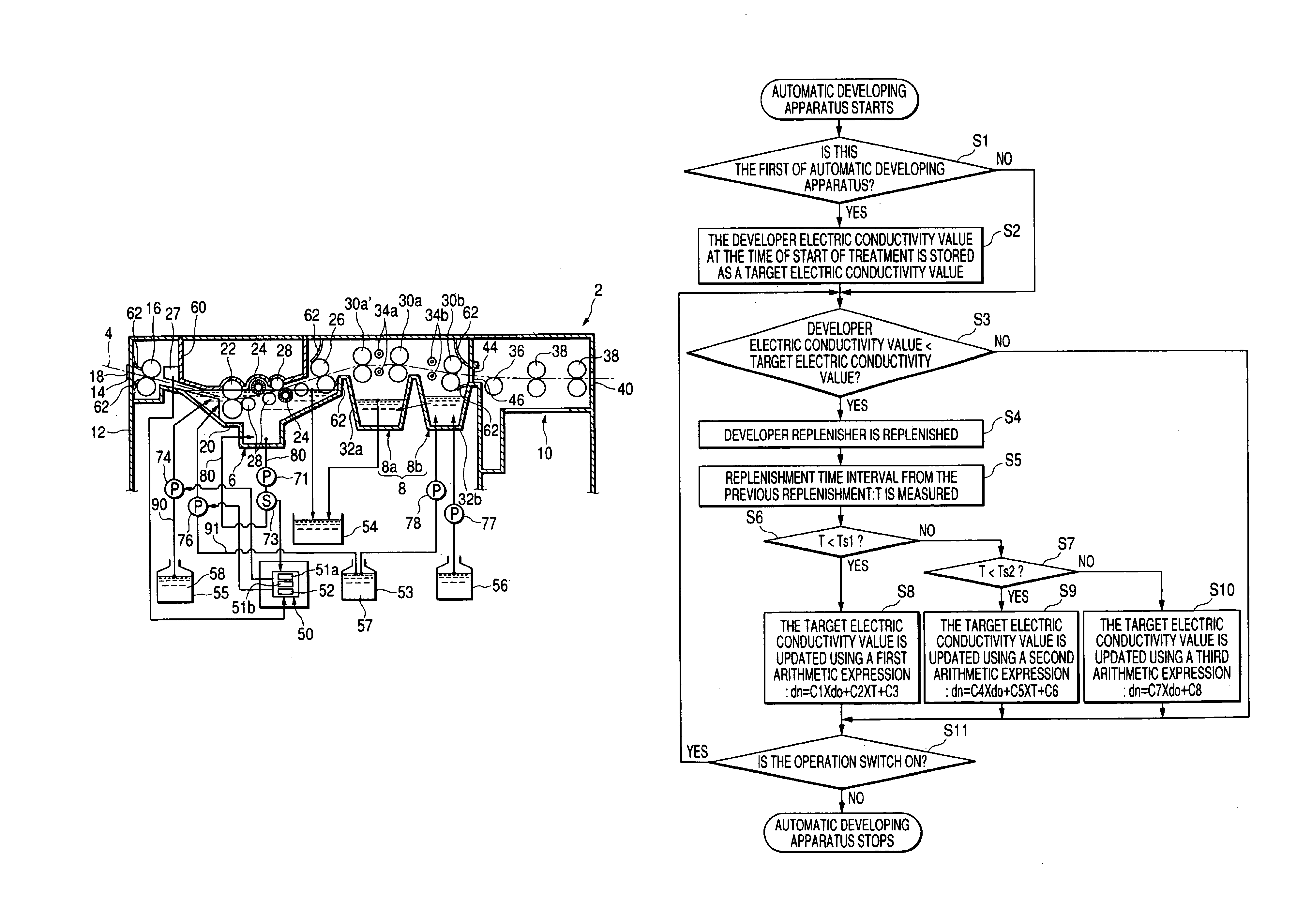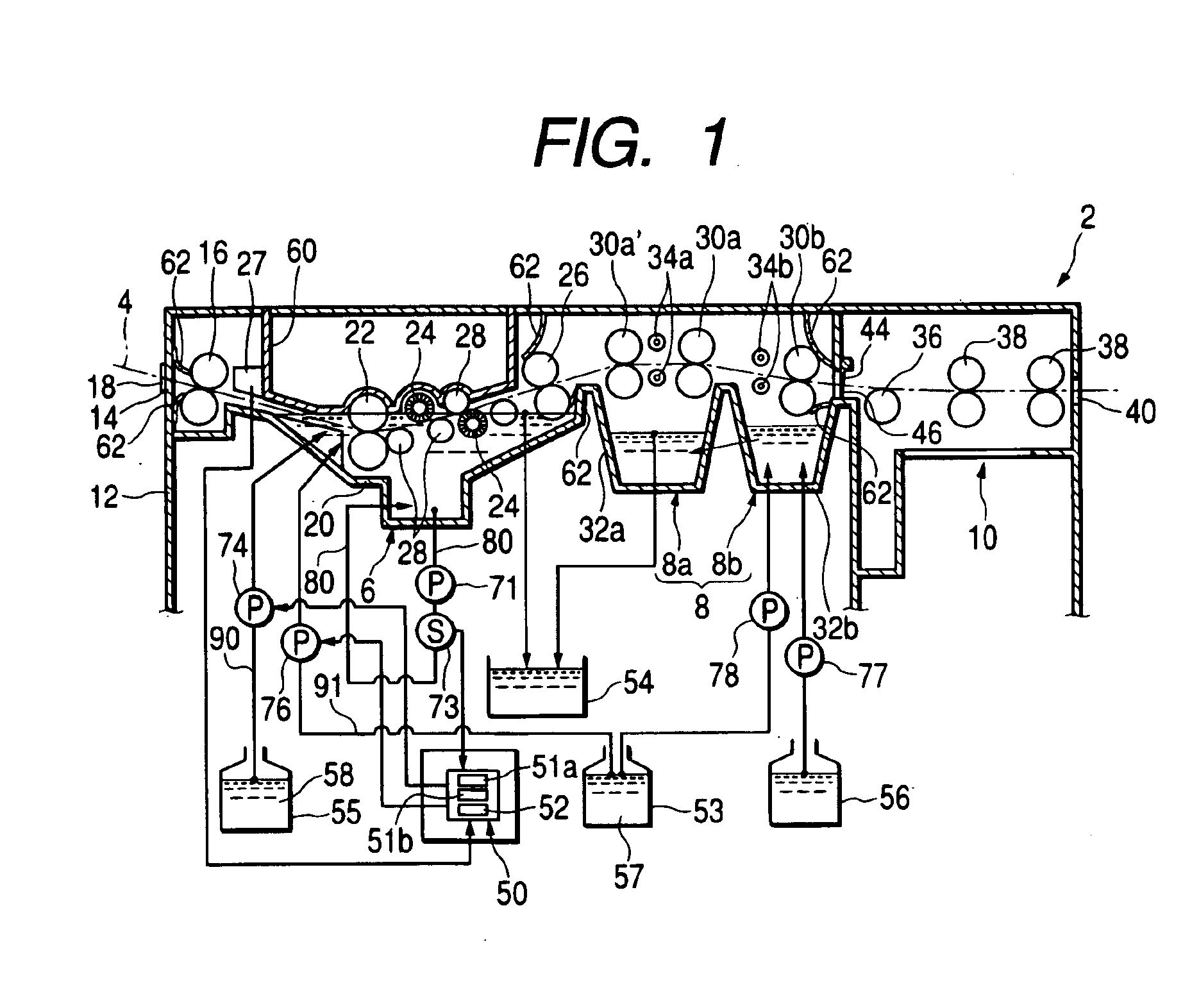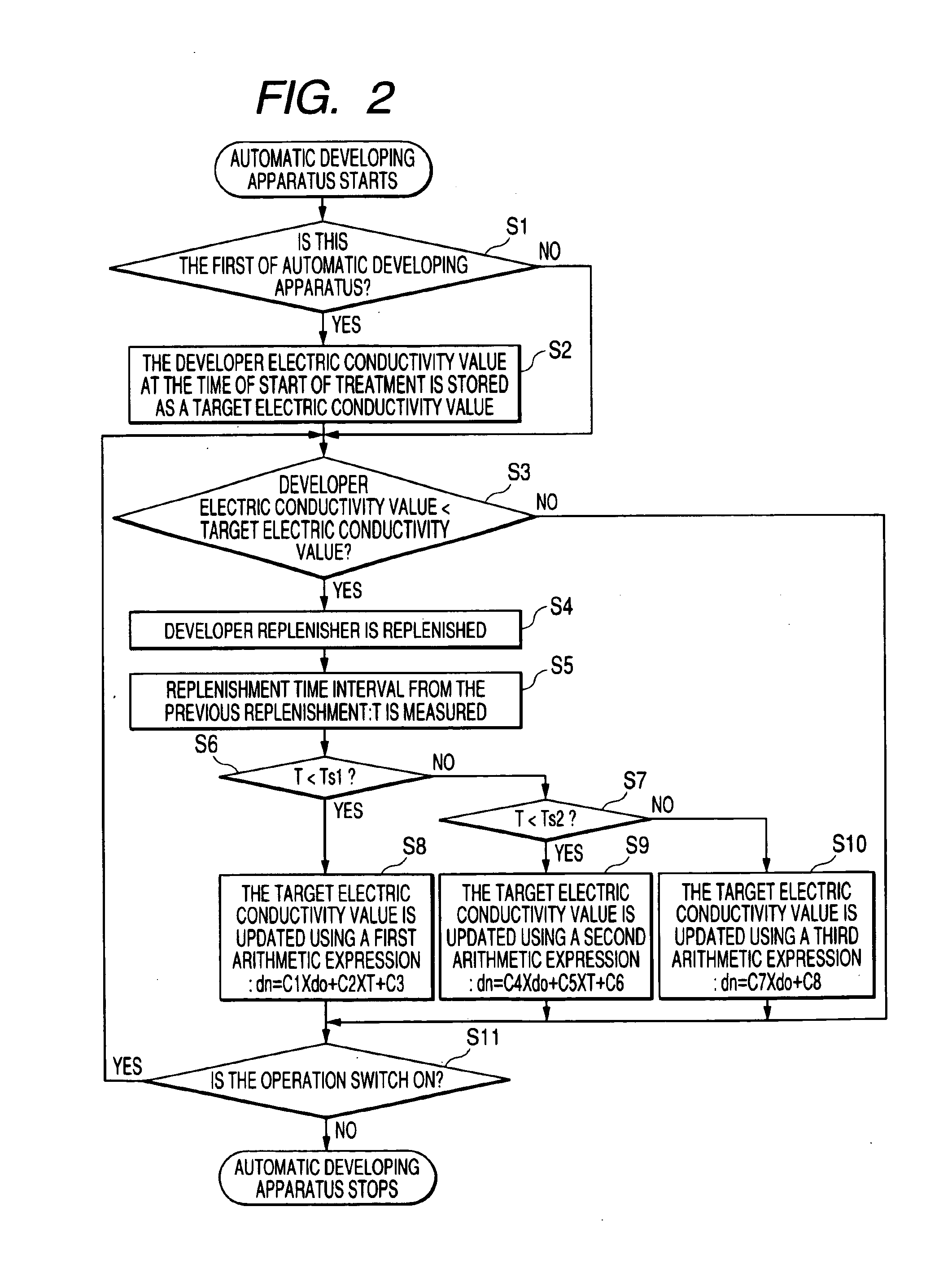Method for replenishing developer of automatic developing apparatus for photosensitive lithographic printing plate
a technology of automatic development and lithographic printing plate, which is applied in the direction of photomechanical equipment, photosensitive materials, instruments, etc., can solve the problems of complex structure, high cost, and difficulty in determining whether the lithographic printing plate has only a single-sided or double-sided, and achieves simple and low cost structure, minimizing fluctuations in developer sensitivity
- Summary
- Abstract
- Description
- Claims
- Application Information
AI Technical Summary
Benefits of technology
Problems solved by technology
Method used
Image
Examples
first embodiment
Below, the invention will be described by way of embodiments shown in the accompanying drawings. FIG. 1 is a view showing a configuration of an automatic developing apparatus for carrying out a developer replenishing method in accordance with the invention.
As shown in FIG. 1, the automatic developing apparatus 2 includes a developing unit 6 for subjecting photosensitive lithographic printing plates (hereinafter, referred to as “PS plates”) 4 to a development treatment, a two-stage structured finisher unit 8 for washing off the developer attached to the PS plate 4 after development and coating a gum solution thereon, and a drying unit 10 for drying the PS plate after gum solution coating.
Whereas, when the PS plate 4 which requires heating prior to a development treatment is treated, a pre-heating unit not shown in FIG. 1 can also be provided. The pre-heating unit is arranged upstream in the direction of transport of the developing unit 6, and has a function of keeping a prescribed PS...
synthetic example 1
25.6 g of a compound (a) as a structural unit (1), 26.4 g of a compound (b) as a structural unit (2), and 20.4 g of lauryl methacrylate, and 160 g of dimethylacetamide as a structural unit (3) were charged in a 500-ml 3-neck flask, and the flask was kept at 65° C. with stirring under a nitrogen flow. 2,2′-Azobis (2,4-dimethylvaleronitrile) was added in an amount of 2.30 g thereto, and stirring was continued. After 4 hours, the mixture was increased in temperature up to 75° C., and kept for another hour. After the completion of the reaction, the reaction solution was cooled down to room temperature, and poured into 400 ml of water. The deposited solid was filtered out, and dried. This resulted in a fluoroaliphatic group-containing compound P-2 with a yield of 68.4 g. This solid was found to be a high molecular weight compound with a weight-average molecular weight of 30000 by GPC.
Compound (a) of Synthetic Example 1
example 1
Compound (b) of Synthetic Example 1
Synthetic Example 2
A fluoroaliphatic group-containing compound P-15 (weight-average molecular weight 25000) was obtained in the same manner as with Synthetic Example 1, except that the structural units (1), (2), and (3) of Synthetic Example 1 were changed. The following treatments were continuously carried out using a JIS A 1050 aluminum plate with a thickness of 0.24 mm and a width of 1030 mm.
(a) While feeding a suspension of abrasive (pumice) in water, having a specific gravity of 1.12 as an abrasive slurry solution to the surface of the aluminum plate, mechanical roughening was carried out by means of a rotating roller-like nylon brush. The abrasive had an average grain size of 40 to 45 μm and a maximum grain diameter of 200 μm. The material of the nylon brush was 6·10 nylon. The hair length was 50 mm and the hair diameter was 0.3 mm. In the nylon brush, hairs were implanted densely into holes bored on a 300 mm-diaφ stainless tube. Three rotary ...
PUM
| Property | Measurement | Unit |
|---|---|---|
| electric conductivity | aaaaa | aaaaa |
| current | aaaaa | aaaaa |
| frequency | aaaaa | aaaaa |
Abstract
Description
Claims
Application Information
 Login to View More
Login to View More - R&D
- Intellectual Property
- Life Sciences
- Materials
- Tech Scout
- Unparalleled Data Quality
- Higher Quality Content
- 60% Fewer Hallucinations
Browse by: Latest US Patents, China's latest patents, Technical Efficacy Thesaurus, Application Domain, Technology Topic, Popular Technical Reports.
© 2025 PatSnap. All rights reserved.Legal|Privacy policy|Modern Slavery Act Transparency Statement|Sitemap|About US| Contact US: help@patsnap.com



